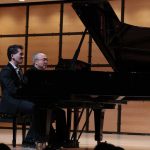照片选自《朝鲜:我们第一次战败》(Korea : The First War We Lost)。作者贝文-亚历山大(Bevin Alexander)朝鲜战争期间为美陆军部派驻前线的战史分遣队队长,后长期为美国陆军及美国政府撰写专题报告,同时兼任某些大报的自由撰稿人。曾长期任教于弗吉尼亚大学。内容简介:本书是第一部由专业的陆军战史学家撰写的著作,全书努力把握历史真实性,全面审视朝鲜战争与中美关系,以及战争带来的后果。
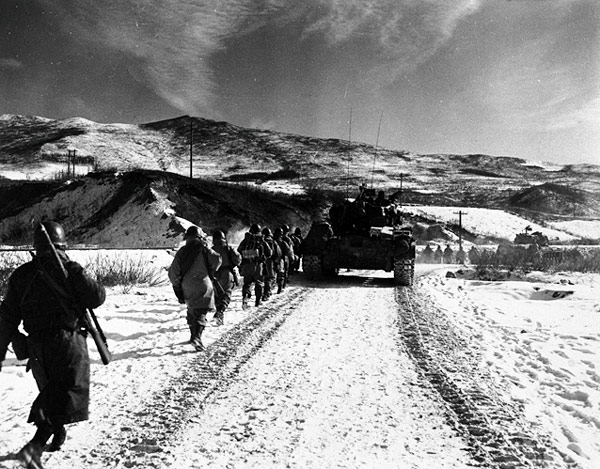
41. These are some of the 385 able-bodied survivors of the 2,500 army 7th Division men caught in a series of Chinese ambushes along the eastern shore of the Changjin (Chosin) reservoir in late November, 1950. (U.S. Marine Corps photo.)

42. Marines move toward evacuation ships at Hungnam harbor in December, 1950, as the United Nations abandons northeast Korea. (U.S. Army photo.)

43. When United Nations troops began evacuating northeast Korea after the Chinese offensive of November, 1950, many North Koreans wanted to go along. Here at Hungnam some of the 98,000 civilians carried to South Korea board ships for the journey. (Defense Department photo.)

44. U.S. ordinance teams detonate great stocks of American ammunition at Hungnam as the last troops of X Corps withdraw in landing craft and abandon the effort to conquer North Korea. (U.S. Navy photo.)
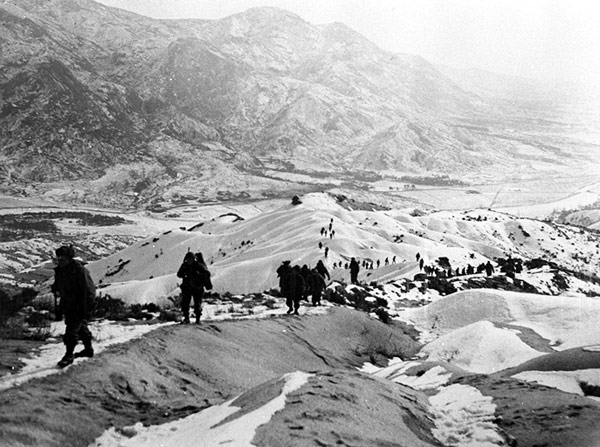
45. Infantry of the 19th Regiment, 24th Division, retreat ten miles south of Seoul on January 3, 1951. (U.S. Army photo.)
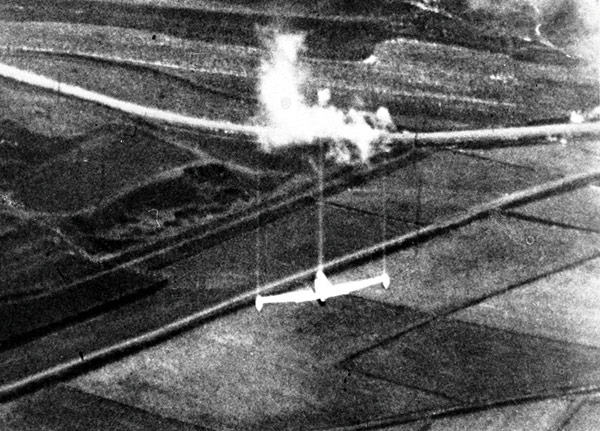
46. An American F-80 jet attacks North Korean vehicles in the open. The F-80 was armed with six .50-caliber machine guns and could carry rockets and bombs. (U.S. Air Force photo.)
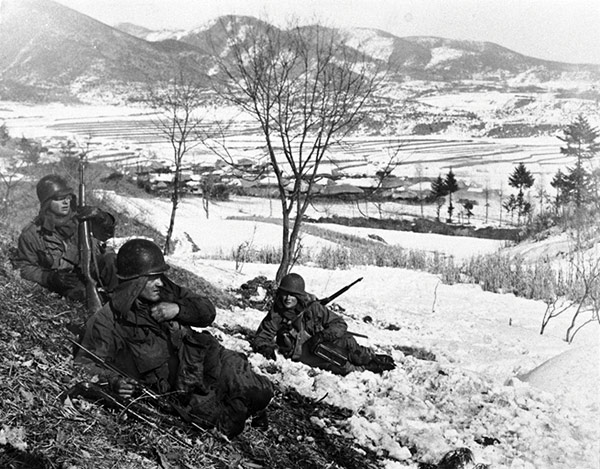
47. Winter battle: a machine-gun crew rests above a Korean village after assaulting a Chinese position. (U.S. Army photo.)

48. A wounded soldier of the French Battalion is readied to be carried back for medical care. The French Battalion gained renown and suffered high losses at Chipyong-ni in early 1951 and on Heartbreak Ridge in the fall of 1951. (UPI/Bettmann Newsphoto.)

49. Men of the 25th Division observe an artillery concentration beginning to land on a Chinese position in central Korea in March, 1951. (U.S. Army photo.)
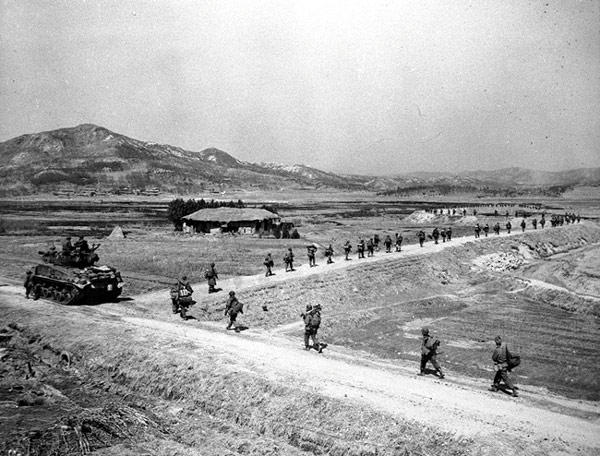
50. Infantry of the 25th Division advance in central Korea in late March, 1951. (U.S. Army photo.)
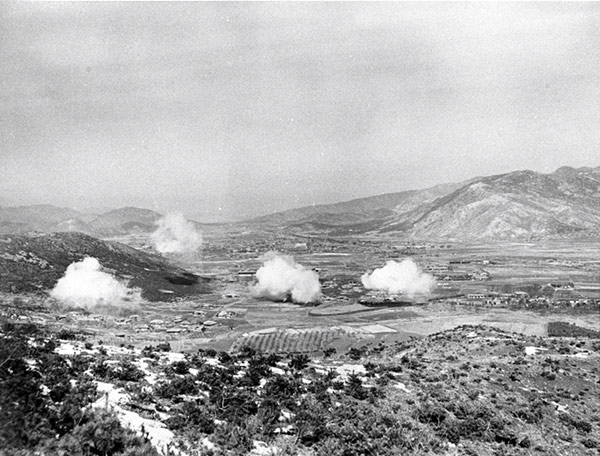
51. Four white-phosphorus artillery shells drop on Chinese positions in front of the 25th Division on the western (I Corps) front in February, 1951. (U.S. Army photo.)
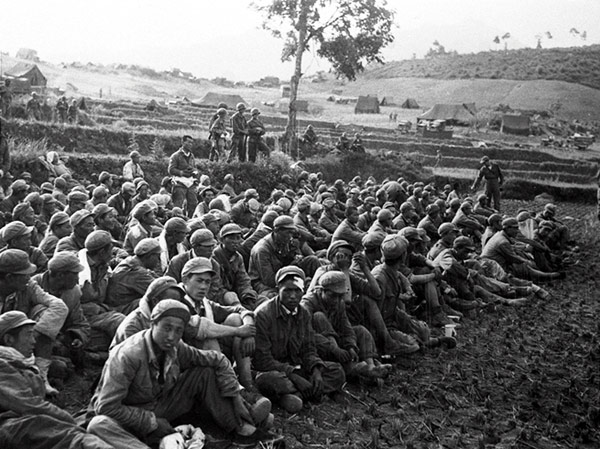
52. Chinese soldiers captured near Hwachon reservoir in central Korea await shipment at 24th Division headquarters. (U.S. Army photo.)

53. A 3rd Division twin-40mm antiaircraft artillery weapon fires direct support against Chinese positions on the western (I Corps) front near the 38th parallel. (U.S. Army photo.)
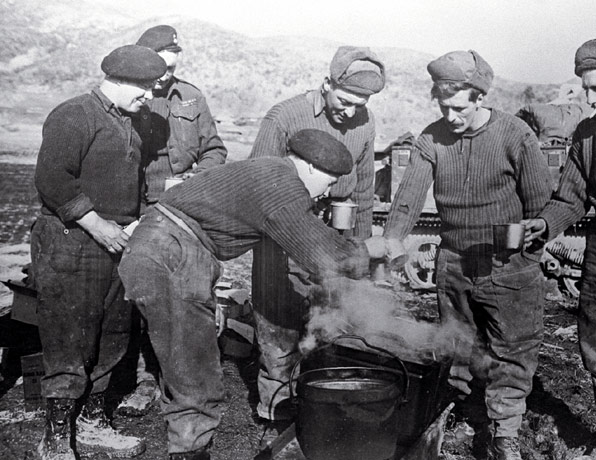
54. Soldiers of the English Gloucestershire Regiment battalion stop for afternoon tea. In April, 1951, this battalion was overrun by a massive Chinese attack and only a few of its members reached UN lines. (Defense Department photo.)
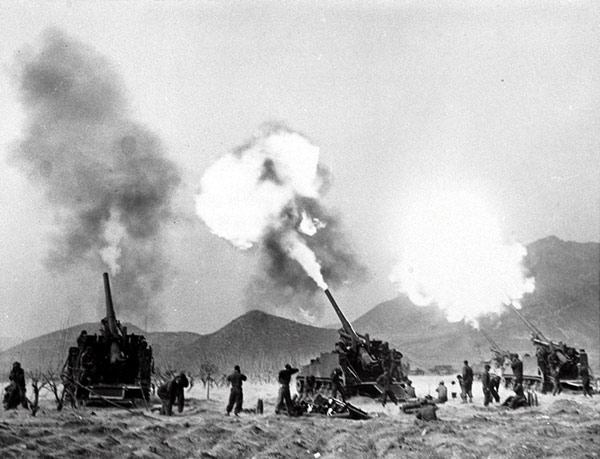
55. A battery of 155mm Long Tom rifles fire north of Seoul in May, 1951, as United Nations troops move up behind withdrawing Chinese. (U.S. Army photo.)
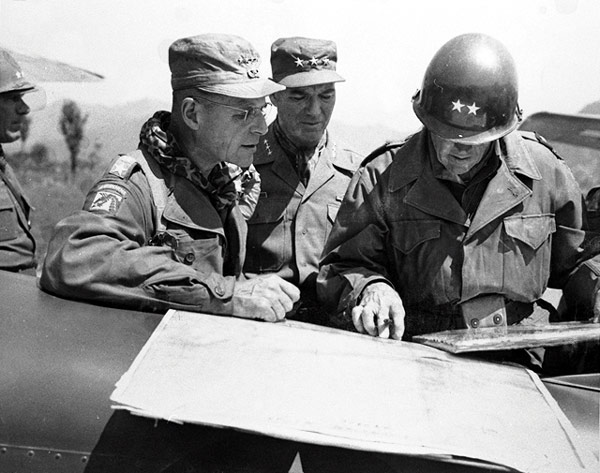
56. Major General William M. Hoge (right), commander of IX Corps, studies map at Chunchon airstrip, May, 1951, with General Matthew B. Ridgway (left), Far East commander, and Lieutenant General James A. Van Fleet, Eighth Army commander. (U.S. Army photo.)
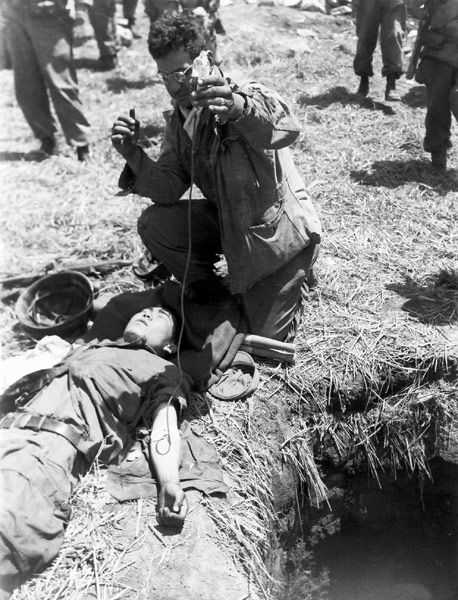
57. A U.S. 3rd Division medic gives blood to a wounded North Korean soldier. (U.S. Army photo.)
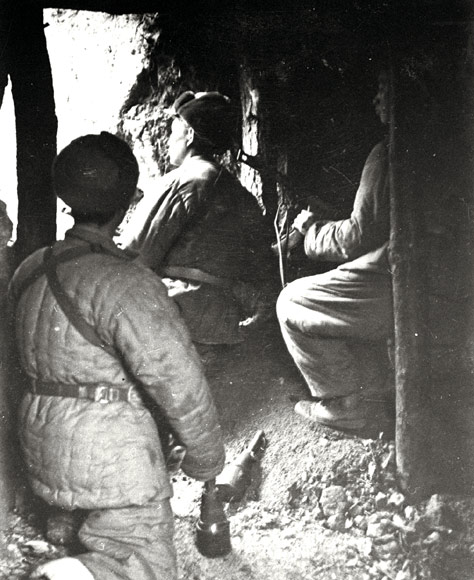
58. To protect against American artillery fire and air attacks, the Chinese and North Koreans created deep underground tunnels, rooms and bunkers nearly impervious to all but direct hits by heavy-caliber weapons. These Chinese soldiers are armed with “potato masher” grenades. (Eastphoto.)

59. An American F-80 Shooting Star stands on its wing tip in June, 1951, to avoid smoke from an earlier aerial attack against a communist-held hilltop. (U.S. Air Force photo.)

60. Men of the 9th Infantry Regiment, 2nd Division, climb a steep slope on Bloody Ridge on September 5, 1951. This regiment suffered severe casualties in this and the subsequent Heartbreak Ridge battles. (U.S. Army photo.)

